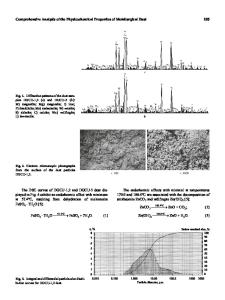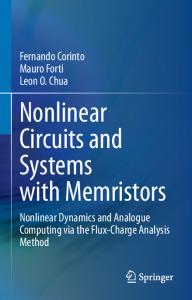Time-resolved analysis of charge responses determining luminescence properties
- PDF / 427,816 Bytes
- 8 Pages / 584.957 x 782.986 pts Page_size
- 29 Downloads / 278 Views
To fabricate practical light-emitting devices, identification and minimization of nonradiative processes are necessary. In this study, an electrical measurement technique for time-resolved analyses of nonradiative processes was proposed. From the comparison between a commercial light-emitting diode (LED) and rare-earth-doped semiconductors, the technique, called electrical frequency-response analysis (FRA), revealed differences in the charge behaviors in the pn junction of bulk semiconductors and impurities. Although the charge response time constant on the order of a nanosecond realized effective recombination of the electron–hole pairs in a LED, the time constant larger than a microsecond still limited the emission intensity of the rare-earth-doped semiconductors such as Er-doped Si nanocrystals and GaAs with Er and O codopants. The energy-loss processes of the Er-doped semiconductors were investigated, and countermeasures to enhance the emission intensity were proposed.
Address all correspondence to this author. e-mail: [email protected] This paper has been selected as an Invited Feature Paper. DOI: 10.1557/jmr.2014.252
energy is finally used for the inner-shell excitation of the rare-earth dopants, the dynamics of the charge carriers in the preprocess are crucial for improving the luminescence efficiency. Once the recombination energy is propagated to the rare-earth dopants, the inner-shell excitation and radiative transition to the ground state is completed within a nanosecond. The preprocess is generally much slower than the inner-shell processes, as shown later, and thus is the limiting process for emission. To discuss the dynamics of the charge carriers, conventional optical measurements such as photoluminescence (PL) are not suitable because the dynamics possibly include various nonradiative processes that are not detectable by optical measurements. On the other hand, electrical measurements are sensitive to the charges; thus, we applied them to the investigation of the dynamics. As well-known electrical measurements, capacitance–voltage (C–V) measurements and deep-level transition spectroscopy (DLTS) have been generally used to evaluate the static properties of semiconductors such as the energy levels and density of trap states.9–11 However, we adopt the frequency-response analysis (FRA) to obtain the dynamic properties. In FRA, the response of an AC current, i.e., the behavior of the charge carriers, is analyzed with respect to the frequency x of the applied AC electric field. Although FRA is a technique in the frequency domain, the obtained spectra can be converted to the time domain with a Fourier transform; the result is mathematically equivalent to the time response of the charge carriers. Despite the equivalence between the frequency domain and the time domain, FRA has the advantage of fast measurement. The typical time-domain measurement is
2366
Ó Materials Research Society 2014
I. INTRODUCTION
Since the development of rare-earth-doped semiconductors in 1980s, basic studies on the fabricat
Data Loading...








